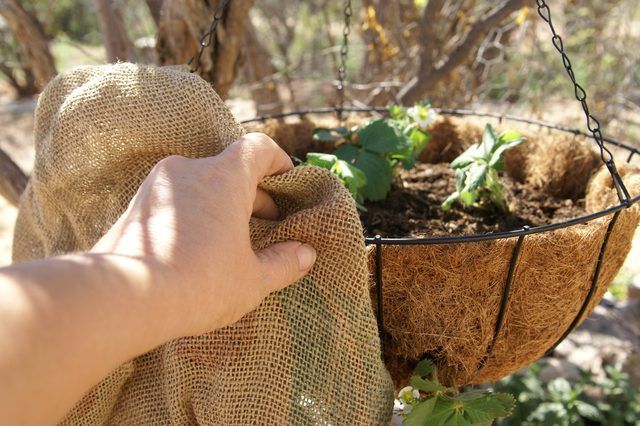Bulbs
Flower Basics
Flower Beds & Specialty Gardens
Flower Garden
Garden Furniture
Garden Gnomes
Garden Seeds
Garden Sheds
Garden Statues
Garden Tools & Supplies
Gardening Basics
Green & Organic
Groundcovers & Vines
Growing Annuals
Growing Basil
Growing Beans
Growing Berries
Growing Blueberries
Growing Cactus
Growing Corn
Growing Cotton
Growing Edibles
Growing Flowers
Growing Garlic
Growing Grapes
Growing Grass
Growing Herbs
Growing Jasmine
Growing Mint
Growing Mushrooms
Orchids
Growing Peanuts
Growing Perennials
Growing Plants
Growing Rosemary
Growing Roses
Growing Strawberries
Growing Sunflowers
Growing Thyme
Growing Tomatoes
Growing Tulips
Growing Vegetables
Herb Basics
Herb Garden
Indoor Growing
Landscaping Basics
Landscaping Patios
Landscaping Plants
Landscaping Shrubs
Landscaping Trees
Landscaping Walks & Pathways
Lawn Basics
Lawn Maintenance
Lawn Mowers
Lawn Ornaments
Lawn Planting
Lawn Tools
Outdoor Growing
Overall Landscape Planning
Pests, Weeds & Problems
Plant Basics
Rock Garden
Rose Garden
Shrubs
Soil
Specialty Gardens
Trees
Vegetable Garden
Yard Maintenance
How to Grow Strawberries in a Hanging Basket
How to Grow Strawberries in a Hanging Basket. A hanging basket offers an alternative that takes advantage of vertical space when you lack yard space for a strawberry (Fragaria x ananassa) patch. Compact day-neutral and alpine strawberry varieties work best for the smaller space in hanging baskets because they don't spread with runners like...
A hanging basket offers an alternative that takes advantage of vertical space when you lack yard space for a strawberry (Fragaria x ananassa) patch. Compact day-neutral and alpine strawberry varieties work best for the smaller space in hanging baskets because they don't spread with runners like June-bearing strawberries. Try strawberry cultivars such as "Albion" or "Seascape," which grow in U.S. Department of Agriculture plant hardiness zones 3 through 9 and 4 through 9, respectively.
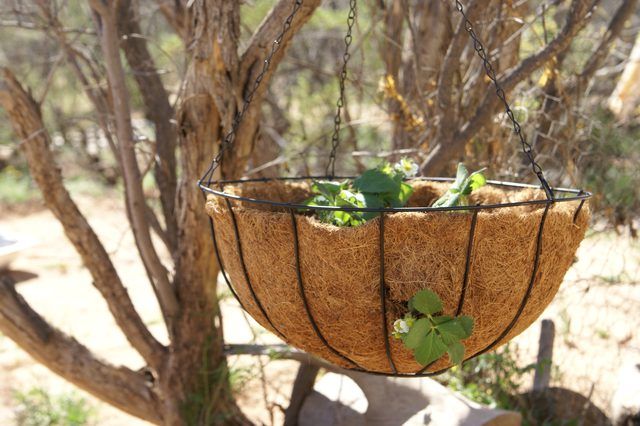
Hanging baskets made from peat moss, coir or other natural materials work best for strawberry hanging baskets because they drain well and mimic the straw commonly used around strawberry plants. A 12-inch diameter basket can typically hold three to five strawberry plants, so you can increase or decrease the number of plants and holes according to the basket size and personal preference. You can place all three to five plants in the top of the basket, or you can plant two in the top and add the remaining ones around the outside of the basket to create a dramatic, cascading look that also gives each plant more room to grow. After deciding how many plants you want, cut evenly spaced, 2-inch diameter holes into the bottom half of the basket liner. Remove the basket liner from the basket frame and cut the holes with a simple kitchen knife.
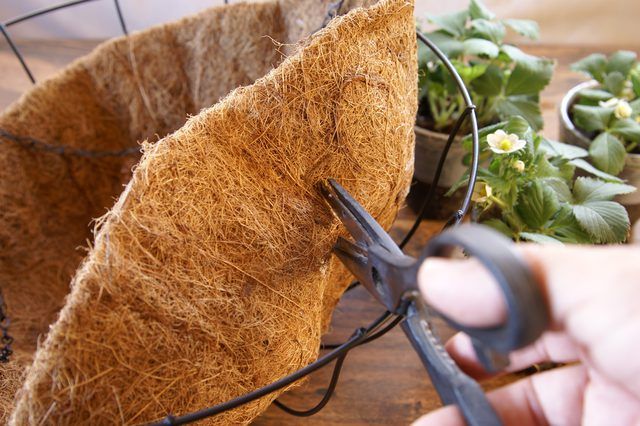
Strawberries are typically sold as bare root plants that should go into the ground (or container) as soon as possible. If you chose to plant strawberries in holes along the outside of the basket, insert the root end of the plants through the holes and into the empty basket. The root crown should be even with the basket. Stuff straw, coir, or peat moss around the holes to hold the plants and soil in place. Fill the basket with a well-draining potting mix rich in organic matter. Instead of purchasing bagged potting mix, try your own blend, such as two parts sphagnum peat moss to one part finished compost and one part perlite. Leave about 2 inches of space to the basket edge so you can plant the remaining strawberry plants in the top. Mulch applied up to the top edge helps retain some moisture in the soil.
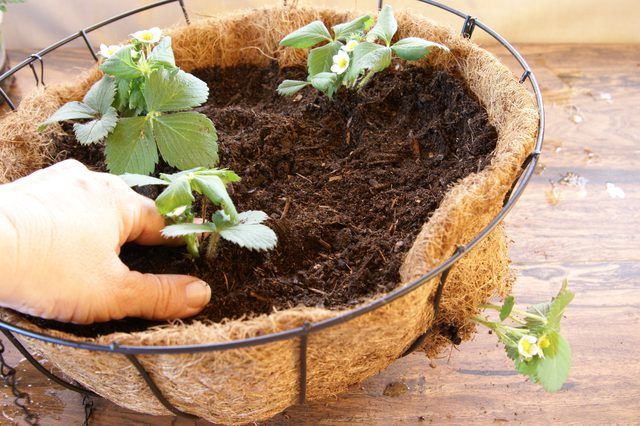
Strawberries need full sunlight -- a minimum of 6 hours of direct sunlight daily. Soil in hanging baskets dries out much faster than ground soil. Daily watering might be required during the hottest, driest parts of the growing season to keep the soil moist, but not wet. Regular all-purpose fertilizer application every two weeks gives plants a boost during the flowering and fruiting stages, but is only necessary once monthly before flowering begins. Mix the fertilizer to approximately half strength for container strawberries. Mix a water-soluble, all-purpose fertilizer at a rate of 1/2 tablespoon of fertilizer to 1 gallon of water. Apply the fertilizer until the soil is evenly moist, using the fertilizer in place of the regular watering routine. Pinch off all flowers from day-neutral and alpine strawberries until July to delay the fruiting period.
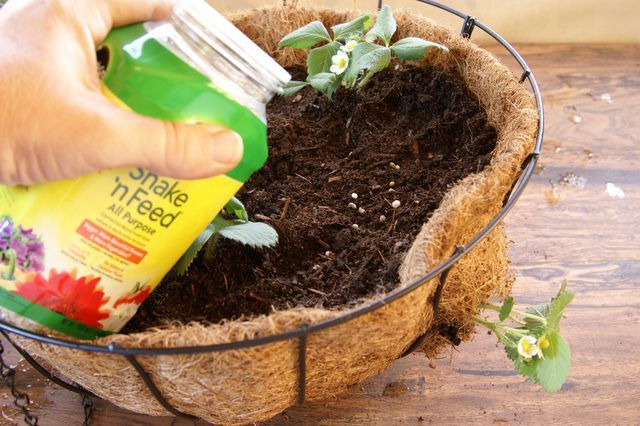
With proper care, strawberries grown in hanging baskets can be overwintered and produce more fruit the following year. Bring the entire basket indoors before the first frost, placing it in a protected location such as a garage or basement for the the winter. A garden shed or other unheated space works for overwintering, but spread a 2- to 3-inch layer of straw over the soil and around the crown of each plant to provide insulation. Burlap or old blankets wrapped around the container provide extra insulation to keep the soil warm. Water the plants when the soil feels dry, which is typically only necessary a few times each month. Strawberries can return outdoors in spring after all frost danger has passed. Replace the soil in the hanging baskets with fresh soil before rehanging them.
